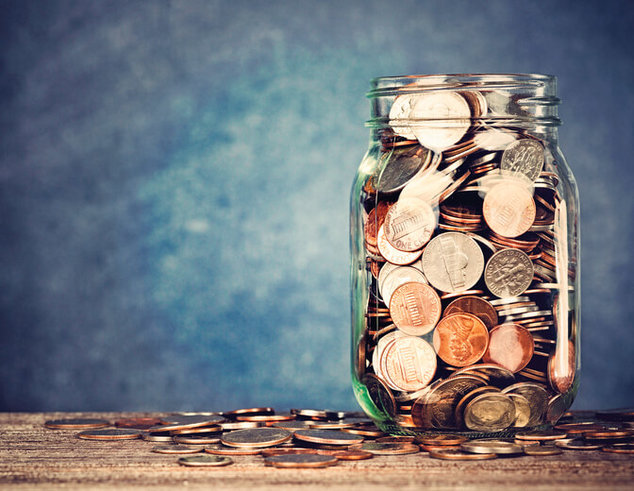How I Save Money While Traveling
Many people think travel is expensive, that it's too costly for the average person to enjoy. To many people, a trip around the world or a long vacation might seem like a good idea, but it simply isn't affordable. I'm here to tell you that view is wrong.
You can afford it. I know you can. I've been traveling across the globe for five years. I don't have some rich uncle, haven't won the lottery, and don't have my parents pay the bills, yet I've managed to travel debt-free for five years thanks to a combination of savings and working overseas.
Since I travel on a tight budget, I've found creative ways to keep my costs down without sacrificing comfort or quality. After all, what's the point of going to Italy if you can't afford the food? Why visit Brazil and not see the Amazon? I learned to dive before going to Australia; I wasn't going to miss the Great Barrier Reef.
20 Ways to spend $20
If you draw a paycheck, you're due an extra $160 in January and February thanks to the Temporary Payroll Tax Cut Continuation Act of 2011.
What're you gonna do with your windfall? Maybe not much. It's pretty easy to miss $20 more in salary, especially if fixed expenses (groceries, insurance, child care, gasoline) keep going up.
Note: This is not a political column. I repeat: This is not a political column. I really don't care what you think about the payroll tax cut. Please keep all your #$@!# dumb-o-crat policies or #$@!# con-man-servative hatefulness comments until a later date. Like, um, never. Get Rich Slowly is a personal finance site, not a flame-throwing political forum. Thank you for not foaming.
That’s a Wrap: Some Alternatives to Traditional Gift-Wrapping
Looking for a greener Christmas? Re-think your gift wrap. According to Stanford University:
- If every U.S. family wrapped three gifts in repurposed materials, the gift wrap saved would cover 45,000 football fields.
- If every family reused two feet of holiday ribbon per year, the ribbon saved could tie a bow around Earth.
Feeling like a planet-despoiling bastard yet? Don't beat yourself up too badly. I use some holiday paper myself. But I obtain/use it in very specific ways:
- Buying during post-holiday clearance sales — they're practically giving the stuff away
- Re-using wrap when possible
- Using non-traditional wrap
- Getting paper and gift bags in non-traditional ways
You can frame the “to wrap or not to wrap” question in three ways: frugal or eco-friendly, or both.
<Cashing in on Craigslist: How I’ve saved thousands of dollars buying used
In August, I wrote about Ryan Finlay, who makes a living through Craigslist arbitrage. Many readers wanted to hear more about how Ryan uses Craigslist to make and save money. In this article, Ryan explains how to use Craigslist to save money on high-ticket items like appliances and furniture. If there's enough interest, he may share more Craigslist tips in the future. Meanwhile, be sure to check out his new site: ReCraigslist.com.
“A penny saved is a penny earned,” my mother used to say. She's always been a thrifty shopper and a bargain hunter. “Pennies add up,” she'd say, but for years I scoffed at the idea. But my resistance to that message was outward and temporary; early on, I began resenting overpaying for candy or soda pop — or anything, for that matter. I began to notice that grocery stores would sell candy bars for half (or sometimes a quarter) of what the local mini-mart charged.
Bargain hunting began to intrigue me. I started joining my mom on garage sale outings, and soon I was hooked. Finding bargains was like discovering hidden treasures! I started reading the classified ads in the newspaper to supplement the garage sales and pawn shops. Garage sales provided the best deals, but were limited to the summer, leaving a void for the rest of the year.
Th
Why I love the megabus: A closer look at a seldom-used (but cheap!) way to travel
I'm in the middle of a month-long trip to the East Coast: a little work, but mostly tourism. Although the conference I attended was in New York City, I flew to Philadelphia because it'll be easier for me to get back there after I've hung out with family and friends.
That meant I needed to get myself from Philly to New York, from there down to Washington, D.C., and then back up to Philly to do my visiting. The total cost of those three trips was — wait for it — three dollars and fifty cents.
That is not a typo. I spent $1 for each of the three tickets and 50 cents to book them.
Smart ways to save money

In January, I started a savings experiment. The experiment was designed to save money for my “emergency cushion” account without feeling the loss from my pocket or budget. I figured I could probably save about $30 to $50 per month — not much, but not peanuts either. In six months, I hoped to save about $250, which would be a smart way to save money.
Last week, a month later than I'd originally intended, I deposited the money into my savings account. Before I did, I counted it up to see how much I'd accumulated. I had $723. Wow! And I'd managed to save all of that without even noticing.
<How to get cheap drugs
Six of the highest-selling prescription medications in the United States will be “off-patent” before the end of 2012. The costs associated with those currently pricey meds will drop faster than the Dow on a bad day.
Here's one example: The generic form of Lipitor might cost as little as $10 per month, compared to the $150 it can cost now. Yowza!
It's a very big deal even if you have health insurance. The average co-pay for a generic formula in the U.S. is $6, as opposed to $24 for non-generics with "preferred status" and $35 for non-preferred brand. That doesn't help much if you use a medication not afforded rock-star status by your insurer — or, worse, if you can't afford insurance.
<How to save on your cell phone plan with secret no-contract deals
Secret phone plans? No contracts? Unadvertised payment plans with no interest? These are all available. But you'll never know until you ask.
I recently decided to switch carriers to T-Mobile, so I jumped on their website to start doing the math of the different plans that they offered.
 Just when I felt I couldn't possibly calculate the details of one more plan, I came across a section on the website that featured plans without contracts. This section was buried; in fact, I had to be logged on a friend's account who was already a customer to be able to see the plans at all.
Just when I felt I couldn't possibly calculate the details of one more plan, I came across a section on the website that featured plans without contracts. This section was buried; in fact, I had to be logged on a friend's account who was already a customer to be able to see the plans at all.
Frugal back-to-school shopping
According to the National Retail Federation, we'll spend $68.8 billion outfitting our students for school this year. Yes, I said $68.8 billion. Sounds like a lot of money, right?
More than 80% of the nearly 8,700 people surveyed say that the still-crappy economy has affected the way they'll shop for school supplies. For example:
- 30.7% will comparison-shop online
- 38% will buy store-brand or generic products
- 44.6% will spend less overall
Good ideas all, but I'd add another tactic: Start early.
Frugal beauty: How to look good on a budget
Pinching pennies doesn't mean you can't make yourself pretty. Yes, it's true that personal-care products and services can take a big bite out of your budget. By the time you've paid for your salon visit, your skin cream, your hair product, and your lip balm, you can easily be out $100 or more in any given month. You don't want to overindulge and blow a lot of money on personal appearance. All the same, it's important to take care of yourself, and it's possible to do so frugally. Here's how.
Do Less
I'll tell you a secret: I haven't washed my hair in weeks. I rinse it with water every morning when I take my shower (in my fancy, newly-repaired shower that now features hot and cold running water!). But I only shampoo and condition it about once a month. When I do, I use a 50-percent solution of shampoo and water. This means I'm using about 1/60th of the shampoo I used to use when I washed my hair every day with full strength shampoo. Needless to say, one bottle of shampoo lasts me a whole lot longer.
There's a whole "no-poo" movement for people who don't want to shampoo their hair. A lot of them rinse with baking soda and vinegar instead, but I've found that even that is optional.